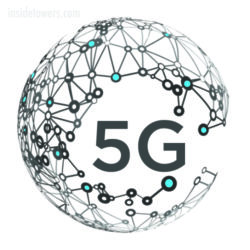5G fronthaul, mid haul and backhaul, collectively known as xHaul, dramatically change the basic features of 4G’s mobile backhaul, driven by new use cases (with highly distributed content and applications) and a novel radio access network (RAN) architecture that mandates new transport attributes, according to a white paper by RAD, a global telecom access solutions vendor.
5G xHaul delivers higher data-rates, lower latency and packet loss, higher reliability per application, hard isolation with end-to-end network slicing, and dynamic connectivity for on-demand services encompassing multiple physical and virtual components,” RAD said.
The market for xHaul, as well as transport and packet processing, will grow to nearly $9 billion by 2025, according to the Dell’Oro Group’s Microwave Transmission & Mobile Backhaul Market 5-Year Forecast.
“This multi-year growth [in mobile transport] is expected to be driven by 5G,” wrote Jimmy Yu, Dell’Oro analyst. “We believe the highest growth in xHaul will be from growing installations of routers and switches as more Layer 2 and 3 functions are required in the mobile network.”
Mobile backhaul and fronthaul transport equipment sales, which slowed with the end of the 4G deployment, began to come back slowly as 5G rolled out during the COVID-19 pandemic in 2020. “We believe the growth in 2020 was just the beginning and predict that the mobile transport market, consisting of mobile backhaul and fronthaul, will grow for many more years and that the cumulative revenue for the next five years will approach $27 billion, a solid increase over the previous five-year period,” Yu wrote.
New products from Fujitsu Network Communications, Inc. and HFR Networks, Inc., are designed to meet the scalable performance needs of 5G network transport at a lower operational expense. Enhanced Smart xHaul solutions were introduced last week, which include new optics for the M6424 time-sensitive networking (TSN) aggregation and transport switch and the M6208E TSN switch for hardened environments.
“As service providers ramp up 5G service, and begin to merge RAN traffic across legacy 4G frequencies and newly acquired C-band spectrum, Cloud RAN (C-RAN) transport will require high performance and optimized economics to scale capacity efficiently at each cell site,” companies said in a press release.
The enhanced M6424 delivers up to 400G transport capacity with the xWave 400G optical solution for high-capacity TSN and precision time protocol over a single fiber and increased transport efficiency, which results in an eight-to-one fiber savings.
The new M6208E switch is a scalable, high-capacity TSN switch in a compact, hardened enclosure for outside plant wall or pole mounting, built for rapid site deployment in challenging conditions ranging from rural cell sites to constrained environments, such as subways or venues, according to the companies.
“The M6208E switch reduces fiber needs by enabling service blending across legacy 3G or 4G LTE common public radio interface (CPRI) infrastructure at remote radio heads with 5G enhanced CPRI traffic and Ethernet services on a common RAN,” Fujitsu and HSN said in their press release.
ACG Research compared the total cost of ownership of point-to-point (P2P) dedicated dark fiber with active dense wavelength division multiplexing (DWDM) technologies, such as Fujitsu’s Smart xHaul, in the white paper, “C-RAN Mobile Architecture Migration.”
The operational expense of the Smart xHaul solution was analyzed over five years and compared to other mobile fronthaul alternatives, focusing on the deployment of 150 macro cell sites, each supporting three frequency bands and three sectors. ACG also analyzed the deployment of five small cells per macro cell site for a total of 750 small cell deployments.
“The results demonstrate that although the capital expense of deploying a DWDM solution, such as Smart xHaul, is multiple times greater than the capex of P2P dark fiber, the reduction in fibers due to signal multiplexing and the advanced service assurance capabilities delivers 66 percent lower opex and 30 percent TCO savings,” wrote Tim Doiron, principal analyst for ACG’s Intelligent Networking practice. “When looking at competing DWDM solutions, we also find that the advanced functions of the Smart xHaul solution deliver 60 percent lower opex associated with detecting, identifying root cause and resolving field issues.”
As an HFR Networks’ partner, Fujitsu offers the M6424, xWave 400G and M6208E switching solutions as part of its Smart xHaul transport portfolio, along with network integration and management services.
By J. Sharpe Smith, Inside Towers Technology Editor





Reader Interactions